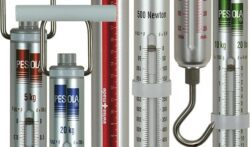Any service provider must ensure they make reasonable adjustments so that their doors can comply with their legal obligations under the Equalities Act. If you are a door and window company that is involved in either the specification of products or helping your customer choose doors for commercial premises are you informing them of their obligations under the Equalities Act 2010?

Specifying doors for commercial premises.
The responsibility falls on the business owner or occupier to comply with current legisation. At the design stage, specification and compliance fall to the architect to ensure the correct products are used. Older buildings, however, offer different challenges and especially listed buildings.
If you are replacing doors in an existing building then it is unlikely an architect will be involved. The local business owner will contact you as the local experienced door company to provide the right door for their premises. They may be completely unaware of their obligations to make reasonable adjustments to their premises so that they can be accessed by the disabled. Who should make them aware?
Do double glazing firms installing doors in commercial premises have a responsibility?
It is our belief that you do have a responsibility to make your customers aware if their door will not comply with the law. And here is why.
- Are you already advising your customers of their legal requirement to have trickle vents in windows to meet building regulations
- Are you already telling your domestic customer of the legal requirement that upstairs windows have egress hinges for fire escape
- Are you already telling your customers why all residential doors and critical areas should have safety glass in them as a legal requirement?
If you are already giving your customers this important information as an experienced window company why are you not doing the same for your commercial doors?
What you need to know about manual doors

If you are fitting a commercial door with a door closer, it is a requirement under Part M and BS 8300 that the force required to open a door should not exceed 30N between 0 and 30˚ and must fall below 22.5N between 30˚ and 60˚.
It is, of course, important that the door latches shut and locks correctly, particularly in the case of security doors that are required to remain locked shut when not in use. BS EN1154 also states that a minimum closing force is required to ensure the door closes correctly.
If you are one of the many companies that specify their commercial aluminium doors with a concealed transom closer, we recommend you specify in every case an RTS 87.
The RTS87 is a high quality closer that is power adjustable from EN1 to EN4. This power adjustment will give you a fine tuning of the door opening and closing force that will ensure your commercial door opens and closes correctly to help it comply with Approved Document M and BS8300.
Many window companies will make the mistake of accepting a budget and non-compliant closer because they are cheaper. What you should know is that whilst a premium closer such as the RTS 87 might be a little more expensive, this will obviously work out cheaper that having to return to your installation to fit a compliant closer when your door is discovered as not having the correct opening and closing forces!
We recommend when you order your door from your trade manufacturer that you make them aware that you want the door fitted with a compliant closer. All reputable door manufacturers should be able to provide this for you.
What about doors with face fixed closers?

Face fixed closers are also sometimes called rack and pinion closers. Today there are several types of face fixed door closers available from those with traditional “scissor arms” to more sophisticated models with slide arms or cam action to give a more sleek appearance.
A rack and pinion closer is unlikely to meet the opening and closing forces required as these are primarily designed so that the door closes firmly past any latching point and locks shut. Also you will always feel a greater degree of resistance with a face fixed closer within the first few degrees of opening a door.
A solution to this is to specify your face fixed closer as a cam action closer with a slide arm rather than the scissor arm. This will avoid the additional tension that scissor arms exert upon first opening and final closing.
A typical quality and compliant door closer that will help meet the requirements of BS8300 and Part M is the TS93.
What is a typical installation where the responsibility for compliance falls on the installer?
Let us say you are a window company that is installing a new door to your local small shop. You as the installer are still subjected to Building Regulations. The Equality Act comes into force once the building is in use but if you are doing any works that are covered by Building Regulations then you need to comply with BS8300 and Approved Document M.
Let us assume a disabled member of the public has also complained to a shop about how heavy their doors are and the shop owner takes action to remedy the situation. He will call upon you as the door installer to rectify the door or make improvements. Again in undertaking this work you are subject to Building Regulations, Approved Document M applies and the door must therefore then comply with the Equality Act.
Do not assume your door supplier is providing you with compliant doors.
Do not assume that because it is a commercial door you are ordering your supplier presume it has to be going into a commercial building and therefore must be provided with a compliant closer.
Many manufacturers of commercial doors that supply fabricated products to window companies that only install will require you to fill out their order form.
In the same way your supplier expects you to to provide and will not guess the manufacturing sizes, the colour or what locks or handles you require, It is your responsibility to ask your supplier to provide you with a closer whether a concealed or face fixed that will help meet the requirements of Part M of the Building Regulations and BS83000 both of which fall under the Equality Act 2010.
Do not assume a correct door closer means a compliant door.
You must remember that is is the complete glazed and installed door that has to comply with the opening and closing forces needed and not just that it is fitted with a compliant door closer.
Hinges, weatherstrips and gaskets, handles and ironmongery and of course the weight of the glass will all play a part. Only on site testing once the door is installed and completed will demonstrate its compliance with BS8300 and Approved Document M.
So how do you measure whether your door is compliant?

To measure the opening a closing forces on site, you can use a Pesola Guage up to 100Nm. This is a very simple device that is very useful for door installers or installation Managers to test that their commercial doors comply with the Building Regulations and British Standards.
The 100N Pesola Audit Kit is recommended for either Document M or BS8300 testing of your installed commercial door and will test the door pressure on either opening or closing.
Contact us if you would like to purchase one.










